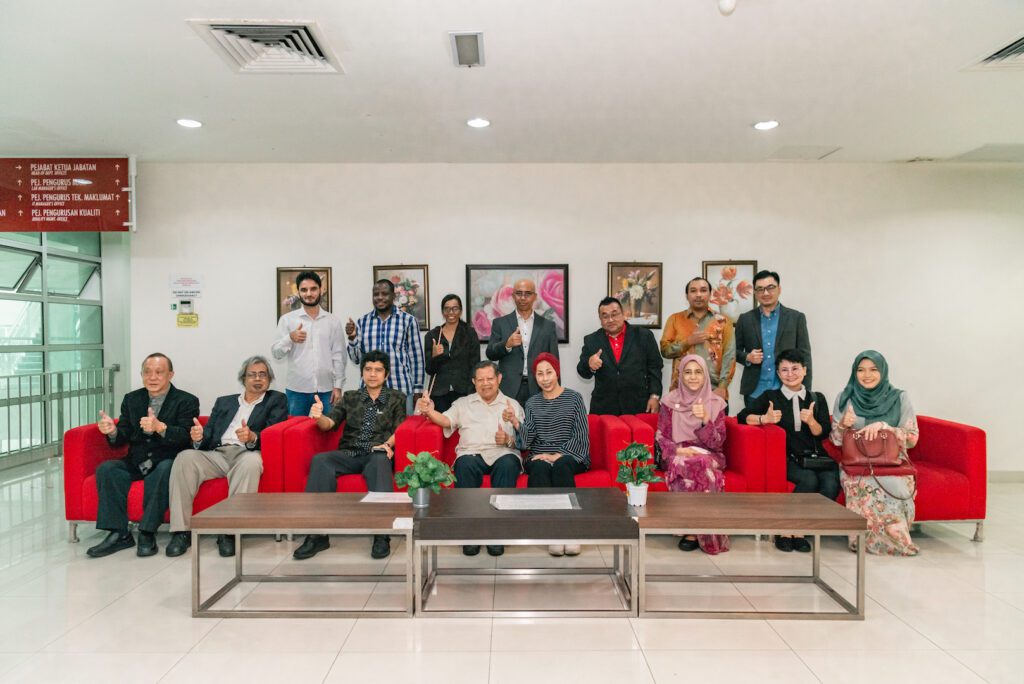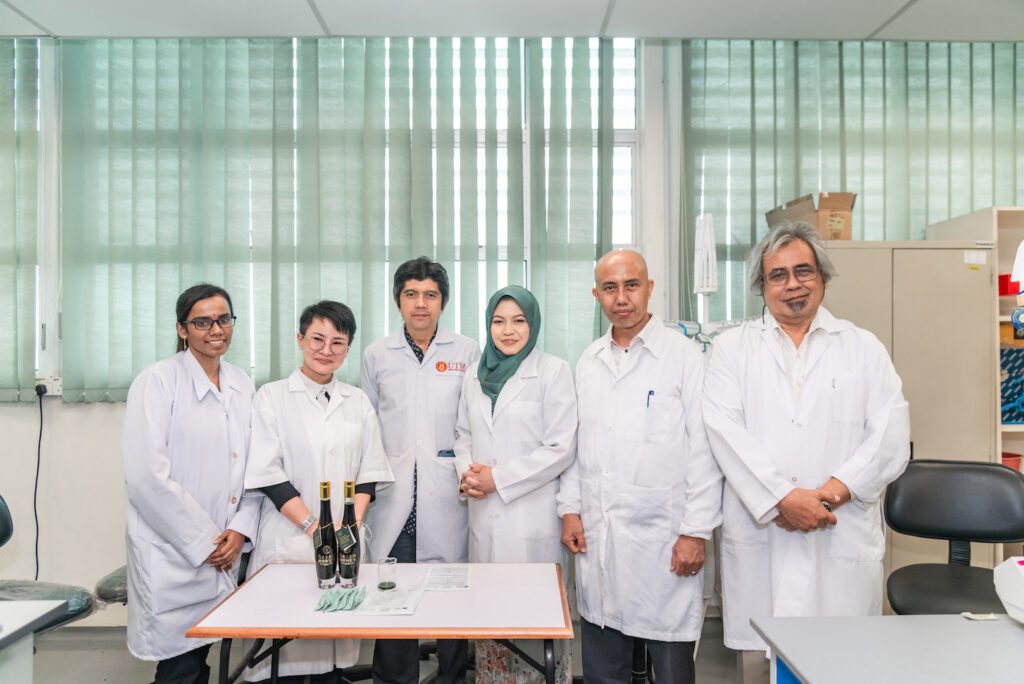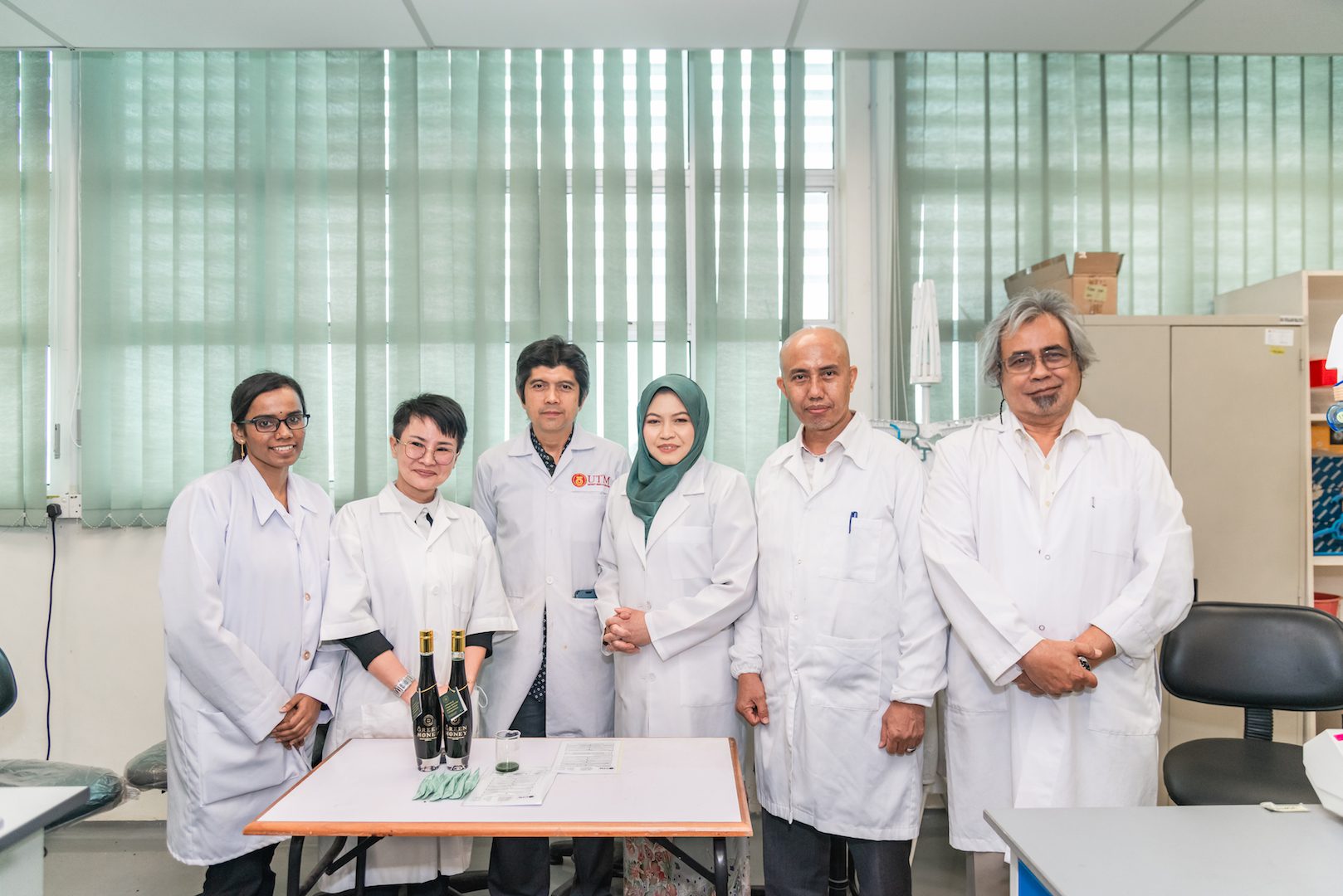By: Prof. Dr. Fahrul Zaman Huyop, ChM. Dr. Mohd Firdaus Abdul Wahab (Department of Biosciences, Faculty of Science)
The launching ceremony of the Borneo green honey collaboration between UTM and NS Field Sdn. Bhd. was held today, 19th May 2022, at the Faculty of Science, UTM, in the presence of the Pro-Chancellor of UTM, Tan Sri Dr. Salleh bin Mohd. Nor.
The ceremony coincides with the annual celebration of the World Bee Day on 20th May. The theme for the launching ceremony was ‘Green honey bee symbolizes the richness of biodiversity, to build the socio-economy of the local community and the nation’.
Previously, a group of researchers from the Department of Biosciences and Department of Chemistry, Faculty of Science UTM, was invited by NS Field Sdn. Bhd. in Kota Kinabalu to conduct a study on a unique green colored honey, called ‘Borneo green honey’. The honey is produced by bees native to Banggi Island, off the coast of Kudat, Sabah.

The study was led by Prof. Dr. Fahrul Zaman Huyop and assisted by a chemist, Assoc. Prof. ChM. Dr. Roswanira Ab. Wahab.
The study also involved two other researchers who are now actively marketing this green honey product: a food science and nutrition expert from Universiti Malaysia Sabah (UMS), Assoc. Prof. Dr. Nurul Huda, and a former lecturer of UMS, Dr. Amir Husni Shariff.
Meanwhile, research on the Sabah green honey was carried out by MPhil candidate in Biosciences, supervised by Prof. Fahrul and Dr. Roswanira, Ms. Nanthini Rajindran.
The products’ quality and authenticity of honey are often disputed and therefore, scientific study on green honey from Banggi Island is necessary. A year’s study by UTM researchers bore fruitful success for the industry and solved their problems.
The Managing Director of NS Field, Ms. Carmen Wong, informed that their products have received a good response in Malaysia and have been exported to countries such as China, Korea, Hong Kong, and Japan.

The green honey research team at the Biosciences Laboratory, Faculty of Science, UTM
From left: Ms. Nanthini Rajindran, Ms. Carmen Wong, Prof. Fahrul, Dr. Roswanira, Dr. Nurul Huda and Dr. Amir Husni
The new data on the Banggi Island green honey showed that the nutritional uniqueness of the honey over other local honey, as well as Manuka honey from Australia and those produced in European and the Middle East countries.
The study findings will be accessible soon in an open access scientific journal for academic reference.
The researchers found that the green color was due to the honey’s considerably high chlorophyll content, an attribute not found in other local honey such as Tualang, Gelam, and kelulut.
In addition, this unique honey is also an exceptionally rich source of three types of essential amino acids, which our human bodies cannot produce.
Soon, UTM researchers will further explore the microbiome in the Banggi Island green honey by metagenomic ‘shotgun’ sequencing to comprehend the diversity of microorganisms in the honey.
The information might interest consumers with an increased awareness of the nutritional quality of the purchased honey.
Most importantly, NS Field is excited about its Sabah green honey products and is willing to collaborate in further research projects.


